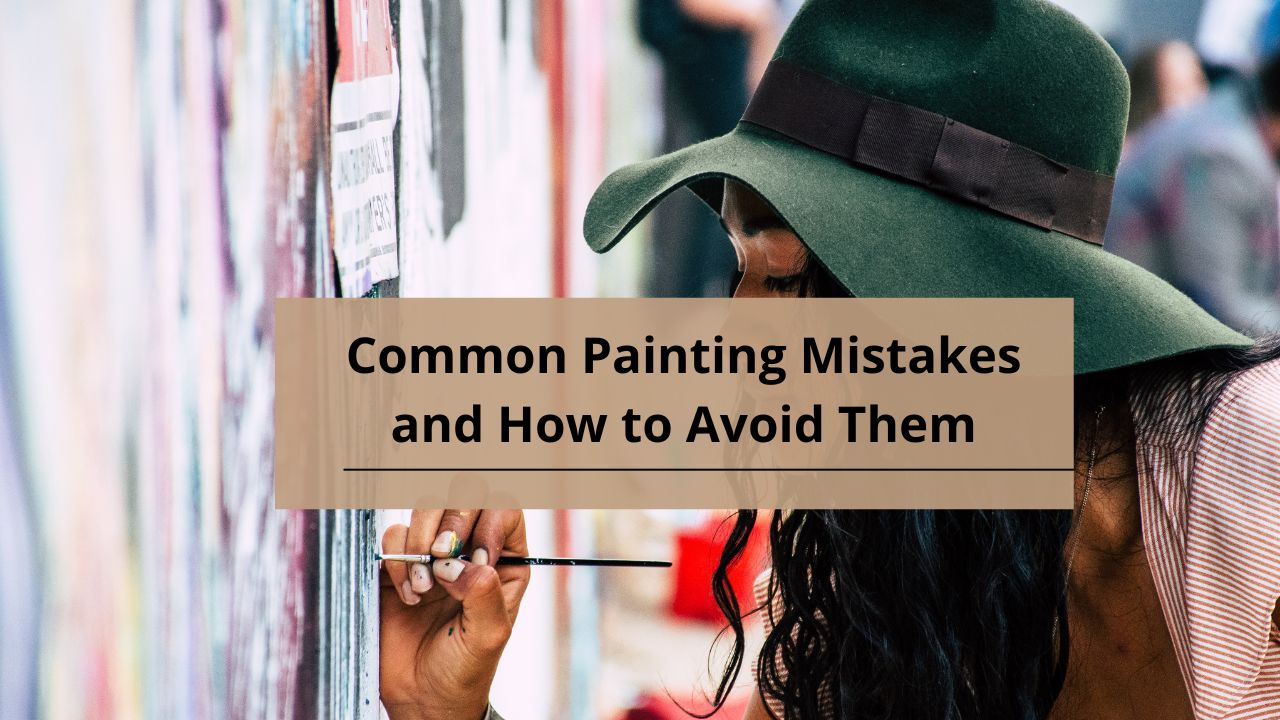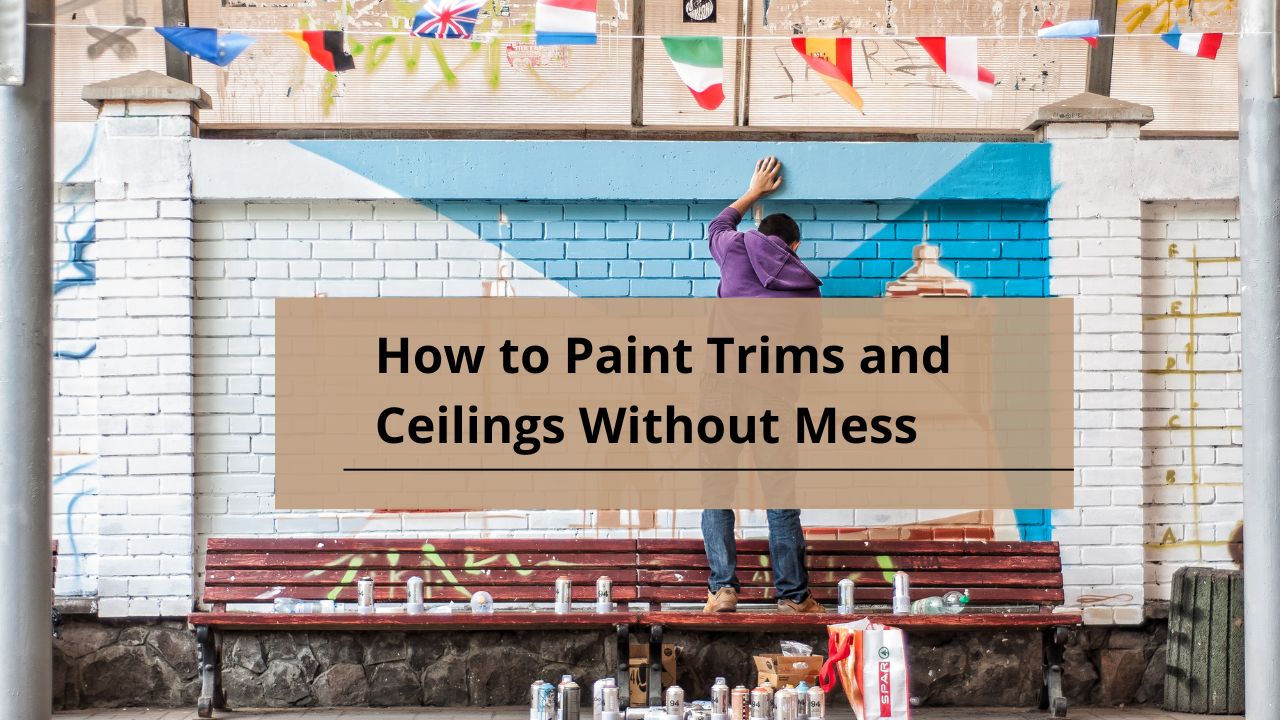Painting can transform a space, but even experienced DIYers can run into common pitfalls. Avoiding these mistakes is key to achieving a flawless finish. In this article, we’ll explore some of the most frequent errors people make during painting projects and offer practical tips for sidestepping them. By understanding and addressing these issues, you’ll ensure your next painting job turns out beautifully.
Preparation Mistakes
Skipping Surface Prep
Surface preparation is one of the most crucial steps in painting.
- Why Surface Preparation is Crucial: Properly prepping your walls or trim ensures that the paint adheres well and lasts longer. Skipping this step can lead to peeling, bubbling, and uneven coverage.
Inadequate Cleaning
Before you start painting, it’s important to clean the surface thoroughly.
- Impact of Dust and Grease on Paint Adhesion: Dust and grease can prevent paint from sticking properly, leading to an uneven finish. Use a mild detergent and water to clean surfaces before painting.
Improper Taping
Masking off areas with painter’s tape helps achieve clean lines.
- Consequences of Poor Masking Techniques: If tape isn’t applied correctly, paint can bleed underneath it, ruining the clean edges. Make sure to press down the tape firmly and use high-quality painter’s tape.
Painting Technique Errors
Using the Wrong Paint
Choosing the right type of paint for each surface is essential.
- Choosing the Right Paint for Each Surface: Different surfaces and areas require specific types of paint. For example, use a durable, washable paint for high-traffic areas and a specialized ceiling paint for ceilings.
Applying Paint Too Thickly
Applying too much paint can lead to drips and uneven drying.
- Why Thin Layers Are Better: It’s better to apply several thin layers rather than one thick coat. Thin layers dry more evenly and reduce the risk of drips and runs.
Overlapping Strokes
Applying paint in overlapping strokes can result in visible lines and uneven coverage.
- Achieving Even Coverage Without Marks: Use long, even strokes with a brush or roller to maintain a smooth finish. Blend the edges of each section to avoid noticeable lines.
Tool Mistakes
Using Low-Quality Brushes or Rollers
Quality tools can make a significant difference in the outcome of your paint job.
- Benefits of Investing in Good Tools: High-quality brushes and rollers provide better coverage, reduce streaks, and make the painting process smoother. Invest in tools that are suited for the type of paint and surface you are working with.
Not Cleaning Tools Properly
Proper cleaning of your tools extends their lifespan and ensures better results.
- Impact on Paint Quality and Longevity: Paint residue left on brushes and rollers can affect the quality of your paint job. Clean your tools thoroughly after each use to maintain their performance.
Timing Errors
Not Allowing Adequate Drying Time
Drying time is crucial for achieving a smooth and durable finish.
- Importance of Drying Between Coats: Follow the manufacturer’s instructions for drying times between coats. Rushing this process can lead to issues like smudging and poor adhesion.
Painting in Adverse Weather Conditions
Weather conditions can affect how your paint dries and adheres.
- How Temperature and Humidity Affect Paint: Painting in high humidity or extreme temperatures can cause issues like improper drying and uneven finishes. Aim to paint in moderate conditions for the best results.
Finishing Touches Mistakes
Neglecting Touch-Ups
Even with careful work, touch-ups might be necessary.
- How to Identify and Fix Imperfections: After the paint has dried, inspect your work for any imperfections. Use a small brush to carefully touch up any areas that need it.
Removing Tape Too Early
The timing of tape removal is important for clean lines.
- Timing for Tape Removal: Remove painter’s tape while the paint is still slightly wet or after it has completely dried to avoid peeling the paint off with the tape.
Conclusion
By avoiding these common painting mistakes, you can ensure a smoother, more professional finish. Proper preparation, choosing the right paint and tools, and paying attention to detail during application will help you achieve a beautiful result. Remember, patience and careful execution are key to a successful painting project.
FAQs
1. What are the most common mistakes in painting walls?
Common mistakes include not preparing the surface properly, using the wrong type of paint, applying paint too thickly, and not allowing adequate drying time.
2. How can I fix paint that has dripped or splattered?
If the paint is still wet, carefully wipe it off with a damp cloth. For dried paint, gently scrape it off and touch up the area with a fresh coat of paint.
3. Why is it important to let paint dry between coats?
Allowing paint to dry between coats ensures proper adhesion and a smooth finish. Skipping this step can lead to peeling, smudging, and uneven coverage.
4. How can I avoid brush marks when painting?
Use high-quality brushes or rollers and apply paint in long, even strokes. Avoid overloading the brush or roller to prevent visible brush marks.
5. What should I do if my paint job has uneven coverage?
Inspect the area and touch up any spots with a small brush. Ensure that you apply additional coats as needed for even coverage, blending the edges carefully


